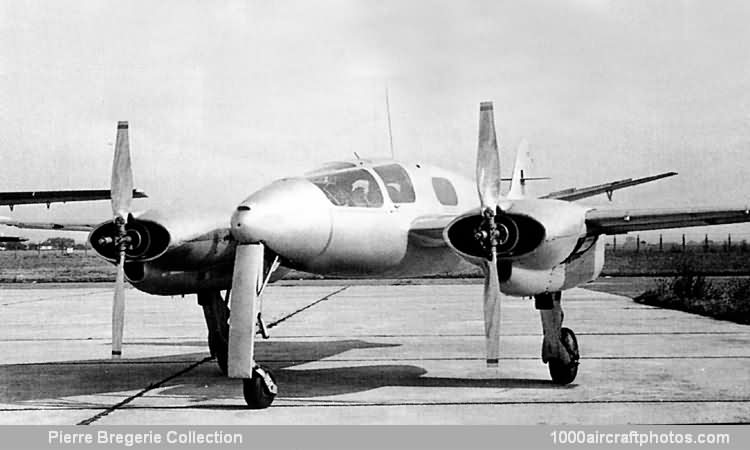10/31/2010. Remarks by Walter van Tilborg: "The three-seat H-100 was purely built for research work and designed by René Hirsch, an engineer with ONERA (Office National d'Études et de Recherches Aérospatiales, National Aeronautical Studies and Research Office). The aircraft was built by M.Aé.R.C. (Moyens Aérodynamiques de Régulation et de Controle) to explore the so-called gust-absorption (gust alleviation) phenomena.
It incorporated a system in which the halves of the horizontal tail moved on chordwise hinges to operate flaps on the wings. The conventional elevators provided not only pitching moments, but moved the tail halves about their chordwise hinges to cause the flaps to move in the direction to provide direct lift control. In this way, the loss of longitudinal control due to the gust-alleviation system was overcome.
Of wooden construction, the H-100 incorporated many other ingenious features, including swiveling wing tips for reducing rolling moments due to rolling gusts and lift due to horizontal gusts. The design also incorporated large pneumatic servos operated by dynamic pressure to restore damping in roll and to stabilize the rate of climb or descent.
Registered F-WDVC the H-100 first flew on June 15, 1954 with two 95 hp Régnier 4-EO four-cylinder air-cooled inverted in-line engines. The airplane had good handling qualities and appeared to have been very successful in providing a smooth ride, as shown by some time histories in rough air with the system turned on and off. After about 30 flights, the airplane ran into a ditch at the end of the runway and was damaged.
In 1962 the aircraft was re-engined with two 170 hp Lycoming O-360 four-cylinder horizontally-opposed air-cooled engines and also fitted with a smaller diameter nose wheel. Reregistered F-WGVC the airplane made numerous additional flights with somewhat more complete instrumentation. It made its last flight on June 16, 1971, after a total of 130 flight hours it was donated to the Musée de l'Air et Espace, at Le Bourget, Paris, where it still is on display."
